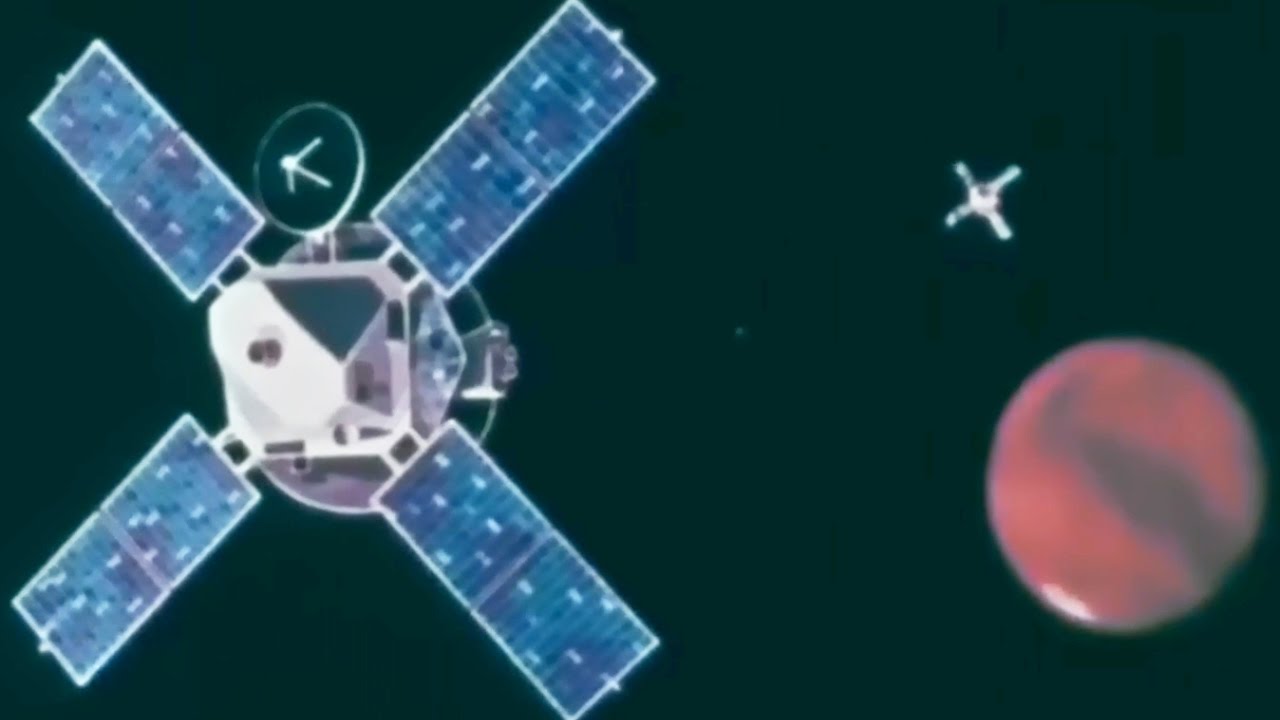Mars playlist:
more at:
Pre-landing overview of the Viking Mars Orbiters and Viking Mars Landers and their mission. Produced for NASA by Image Associates. NASA film HQ-266.
Public domain film from the US National Archives, slightly cropped to remove uneven edges, with the aspect ratio corrected, and one-pass brightness-contrast-color correction & mild video noise reduction applied.
The soundtrack was also processed with volume normalization, noise reduction, clipping reduction, and/or equalization (the resulting sound, though not perfect, is far less noisy than the original). Some music had to be deleted from the soundtrack due to a bogus copyright claim.
The Viking program consisted of a pair of American space probes sent to Mars, Viking 1 and Viking 2. Each spacecraft was composed of two main parts: an orbiter designed to photograph the surface of Mars from orbit, and a lander designed to study the planet from the surface. The orbiters also served as communication relays for the landers once they touched down.
The Viking program grew from NASA’s earlier, even more ambitious, Voyager Mars program, which was not related to the successful Voyager deep space probes of the late 1970s. Viking 1 was launched on August 20, 1975, and the second craft, Viking 2, was launched on September 9, 1975, both riding atop Titan III-E rockets with Centaur upper stages. Viking 1 entered Mars orbit on June 19, 1976, with Viking 2 following suit on August 7.
After orbiting Mars for more than a month and returning images used for landing site selection, the orbiters and landers detached; the landers then entered the Martian atmosphere and softlasoft-N at the sites that had been chosen. The Viking 1 lander touched down on the surface of Mars on July 20, 1976, and was joined by the Viking 2 lander on September 3. The orbiters continued imaging and performing other scientific operations from orbit while the landers deployed instruments on the surface.
The project cost roughly US$1 billion in 1970s dollars. Inflation adjusted to 2016 dollars would be about 6 billion USD. It was highly successful and formed most of the body of knowledge about Mars through the late 1990s and early 2000s…
Viking landers
Each lander comprised a six-sided aluminium base with alternate 1.09 and 0.56 m (3 ft 7 in and 1 ft 10 in) long sides, supported on three extended legs attached to the shorter sides. The leg footpads formed the vertices of an equilateral triangle with 2.21 m (7 ft 3 in) sides when viewed from above, with the long sides of the base forming a straight line with the two adjoining footpads. Instrumentation was attached inside and on top of the base, elevated above the surface by the extended legs.
Each lander was enclosed in an aeroshell heat shield designed to slow the lander down during the entry phase. To prevent contamination of Mars by Earth organisms, each lander, upon assembly and enclosure within the aeroshell, was enclosed in a pressurized “bioshield” and then sterilized at a temperature of 111 °C (232 °F) for 40 hours. For thermal reasons, the cap of the bioshield was jettisoned after the Centaur upper stage powered the Viking orbiter/lander combination out of Earth orbit.
Each lander arrived at Mars attached to the orbiter. The assembly orbited Mars many times before the lander was released and separated from the orbiter for descent to the surface. Descent comprised four distinct phases, starting with a deorbit burn. The lander then experienced atmospheric entry with peak heating occurring after a few seconds after the start of frictional heating with the Martian atmosphere. At an altitude of about 6 kilometers (3.7 miles) and traveling at a velocity of 900 kilometers per hour (600 mph), the parachute deployed, the aeroshell released and the lander’s legs unfolded. At an altitude of about 1.5 kilometers (5,000 feet), the lander activated its three retro-engines and was released from the parachute. The lander then immediately used the rockets to slow and control its powered descent, with a soft landing on the surface of Mars…

